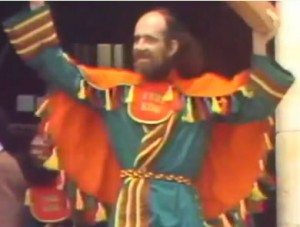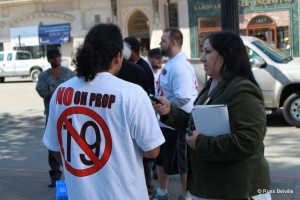
At Seattle Hempfest this year, there was a panel called “Medicinal, Recreational and Spiritual Use – Can they co-exist?” Notably, the panel included NORML Founder Keith Stroup and Americans for Safe Access Washington’s Kari Boiter – who faced off against each other at 2012’s Hempfest on a panel about the Great I-502 Debate.
Everyone was civil and professional, but there was at least one heated moment when Boiter discussed the failings of I-502 with respect to how medical marijuana has changed in Washington for the worse. Stroup hammered home the results of I-502 with respect to the drastic reduction in marijuana arrests for all consumers, finding the idea that there was more negative than positive resulting from I-502 to be incredulous.
One theme throughout the panel, and throughout Hempfest, was a call for unity. A plaintive wail of “can’t we all just get a bong?” for the medical marijuana patients, the religious ganja adherents, and the adult recreational users, with the implication that it is legalization and the healthy hedonistic weed smokers who fan the flames of division.
An implication not rooted in history or reality.
In the beginning of the legalization movement in the late 1960s, there were no “patients” and “believers” and “stoners”. There were just people having their lives upended and their freedom surrendered because they belonged to a certain class. Whether they were hippies, draft-dodgers, jazz musicians, or Mexican laborers, it didn’t matter. What mattered is that they were potheads and that they belonged in a cage.
Keith Stroup founded NORML in 1970 and the fight then was to end the persecution of all marijuana consumers, no matter why they consume. In the early 1970s, what mattered was keeping potheads out of a cage. And indeed, NORML fought and passed laws in eleven states to decriminalize personal possession of marijuana, the first of many steps toward true cannabis freedom.
But then in the mid-1970s, the first divisions among potheads came about. Robert Randall sued the federal government in 1976, claiming he had no choice but to smoke pot or go blind from glaucoma. This medical necessity was recognized and thus began the medical marijuana movement in America. For the first time, certain potheads were exempted from the cage based on their belonging to a certain class.
As the Seventies ran down, the next division among potheads came about. Brother Louv, a sincere devotee to a faith that uses cannabis as sacrament, made headlines calling for First Amendment recognition of his freedom of religion. Forbidding people of his faith from using ganja, he argued, was as unconstitutional as banning Catholics from communion wine.
Now, despite the facts that medical use and religious use only counted for a small sliver of the potheads that were being caged for marijuana, NORML and other people fighting for legalization for all potheads supported all these battles, realizing that any step forward in recognizing cannabis rights was a positive step.
Then, the Eighties happened.

Some people will point to Stroup’s incident outing President Carter’s drug advisor as a cocaine user as the downfall of the 20th century legalization movement and looking from the top of the government down, this may be true. But from the bottom of society up, there was emerging a national parents’ movement that was partially catalyzed by shocking video on the 60 Minutes news program featuring the children of Brother Louv’s congregation as young as seven puffing away on huge marijuana joints.
Fast-forward to the 1990s. NORML is in disarray, having succeeded at no marijuana reforms for almost two decades. Disgruntled NORML staffers broke away to form Marijuana Policy Project and the medical marijuana movement is gaining steam in the Bay Area of California, partially due to marijuana’s efficacy in helping AIDS patients. It was then that the forces of legalization abandoned the fight for laws to protect all potheads and instead focused on the more politically-viable option of fighting only for the sick and disabled who’d tug on the heartstrings of the electorate.
Despite being cast aside by the movement for being the healthy potheads we were, the recreational marijuana consumers wholeheartedly jumped into the fray and supported the medical marijuana laws as they sprung up in California and the West. The understanding was that in the War on Drugs, the first priority was to “get the sick and dying off the battlefield”. Law after law was passed, even though those medical marijuana laws got stricter and stricter, saving fewer and fewer potheads from the cage, but recreational potheads voted for every one of them.
Religious adherents also gained ground in the 1990s as Supreme Court cases that did not recognize the First Amendment religious rights of certain Native People to use powerful hallucinogens led Congress to pass and Bill Clinton to sign the Religious Freedom Restoration Act. That law opened up the possibility for religious users of ganja to also gain their exception from being potheads worthy of a cage, though that line of legal reasoning has yet to come to fruition. Even so, recreational potheads supported their fight, knowing as always that any step forward against prohibition is progress.

In the 2000s, we finally got back to the mission started in 1970 – ending the arrests of all people who use marijuana no matter why they use it. Marijuana Policy Project tried in vain to legalize in Colorado, Nevada, and Alaska. Then a medical marijuana entrepreneur, Richard Lee, sunk $1.5 million of his own money to legalize in California in 2010, and it held promise as the first realistic chance of winning legalization, and in the nation’s largest population state, no less!
Imagine our dismay when we saw our own people fighting to defeat Proposition 19 to legalize in California. People mostly associated with medical marijuana, the people who recreational potheads supported since 1976, trying to sabotage our chance at evading arrest like they had been evading since 1996. Don’t vote for this legalization, they said, because better legalization was coming in 2012. They helped Dianne Feinstein and the cops and prison guards keep prohibition on the books so they could keep busting healthy potheads.
California’s still waiting on that legalization for 2012.

Then we saw that story line repeat in 2012 when people mostly associated with medical marijuana were the loudest opponents to a marijuana legalization law in Washington that even the local cops were supporting. People who’d been evading arrest since 1998 were trying to ensure that the rest of us still face the chance of being caged.
So when I’m asked if medical, spiritual, and recreational use can all coexist, I wonder why you’re asking me? As a recreational consumer, I have supported every medical and spiritual marijuana movement that’s ever existed, only to be paid back with those movements stifling or extinguishing the chances that I no longer face a cage.
Medical and spiritual use movements are by definition divisive and classify cannabis consumers as worthy of a cage or worthy of freedom on the basis of health status and religious belief. Recreational use is a misnomer that exists only to differentiate unworthy from the worthy. There is no recreational use; there is personal use of marijuana, two subsets of which are the personal reasons why someone chooses to use marijuana, medical and spiritual reasons.
If medical and spiritual wish to coexist with recreational, it’s time all users of cannabis recognize that why someone uses marijuana is irrelevant to determining their rights – no user of cannabis deserves a cage, period.






